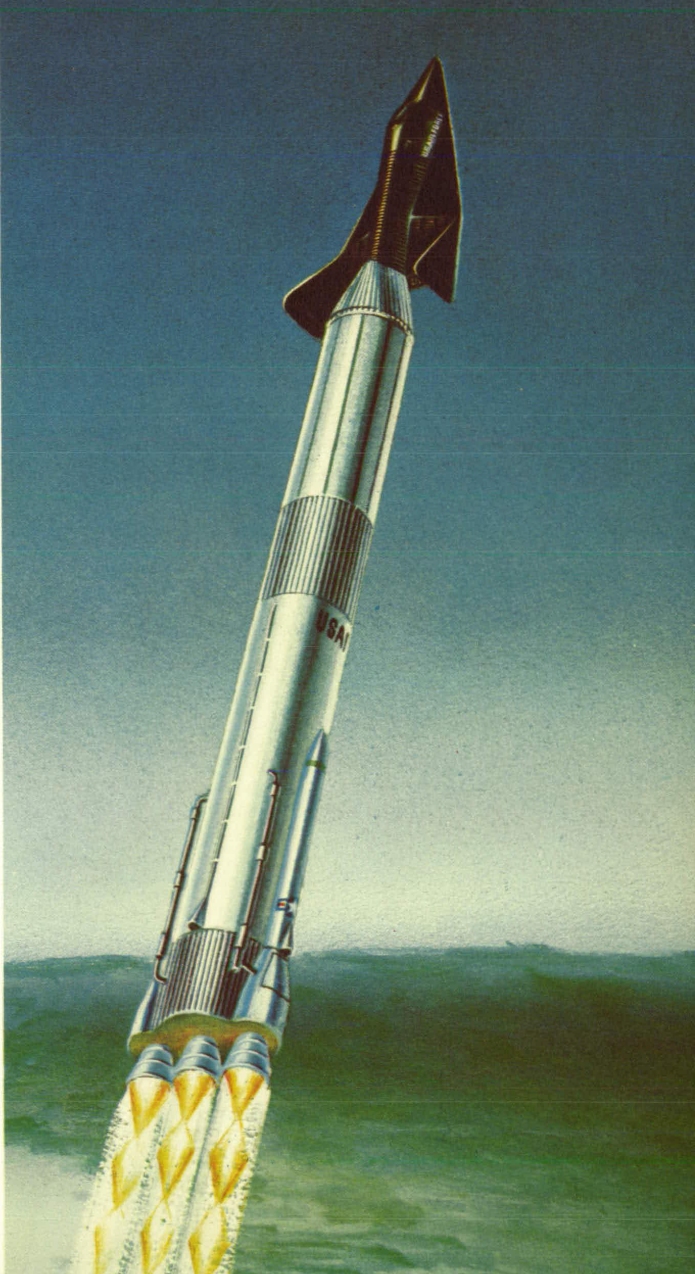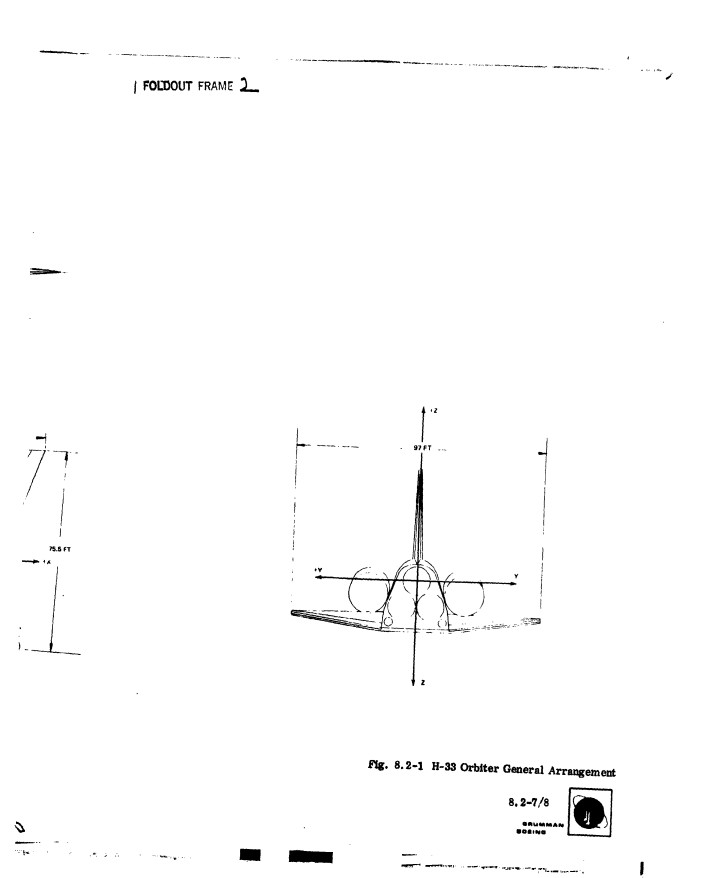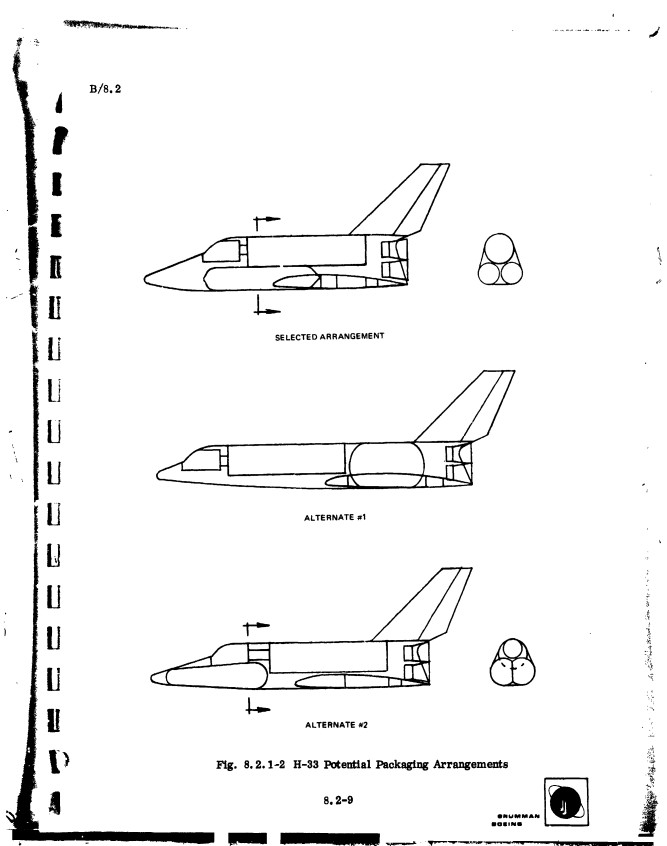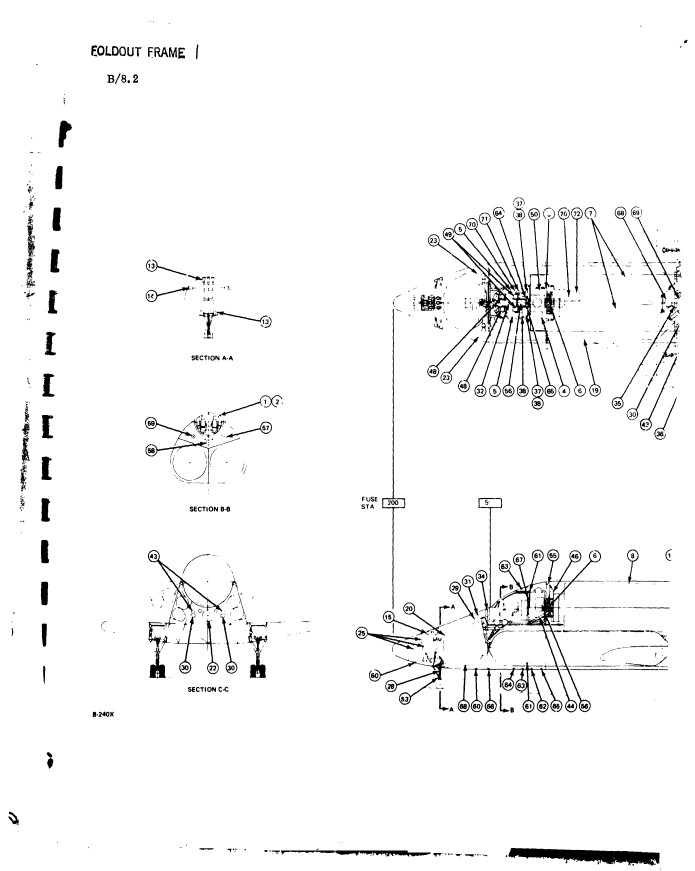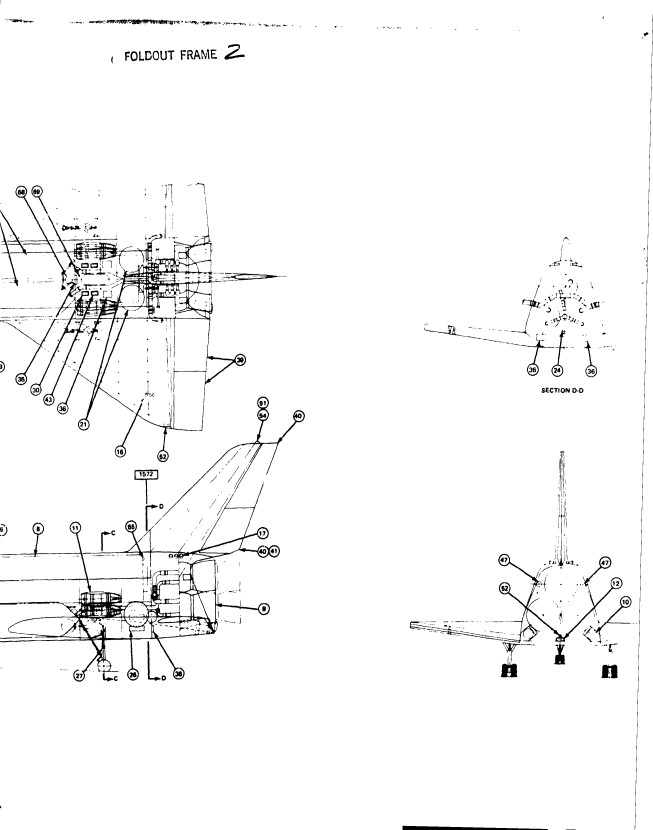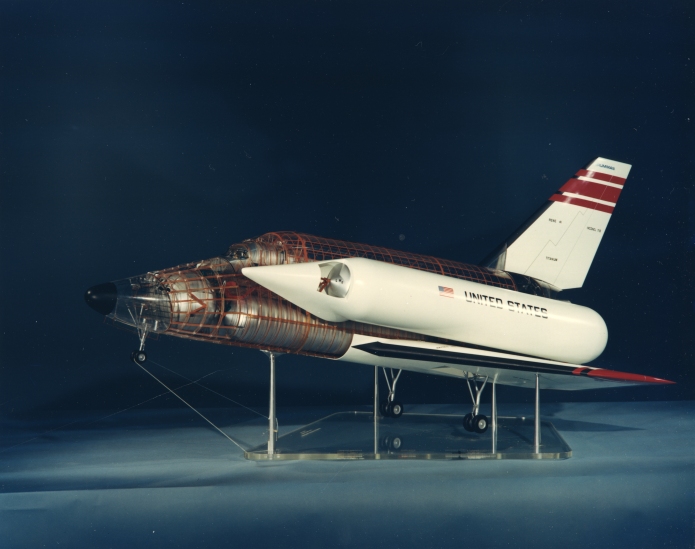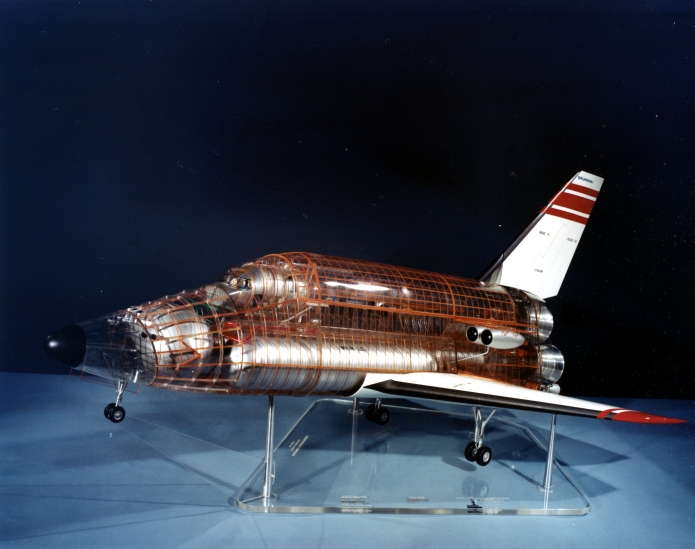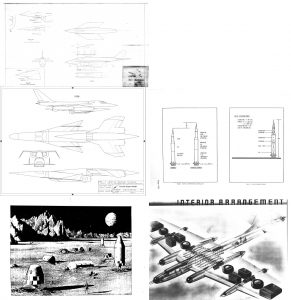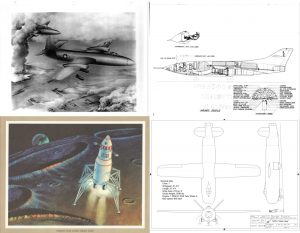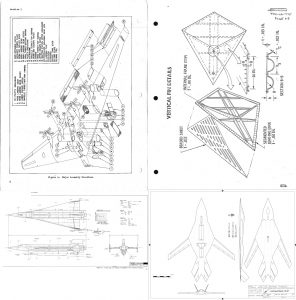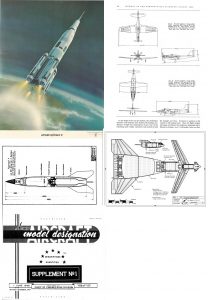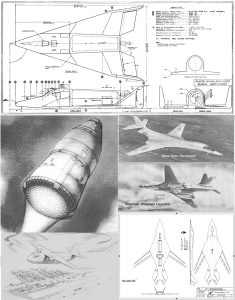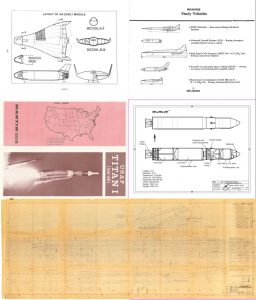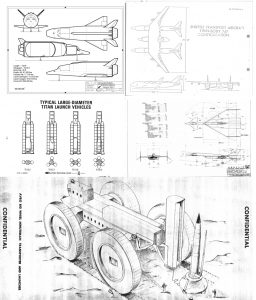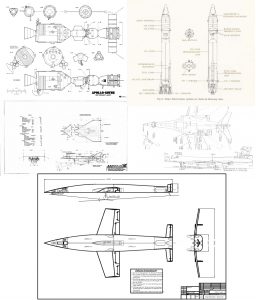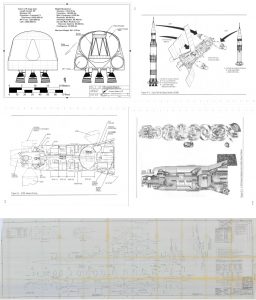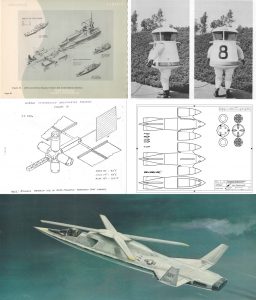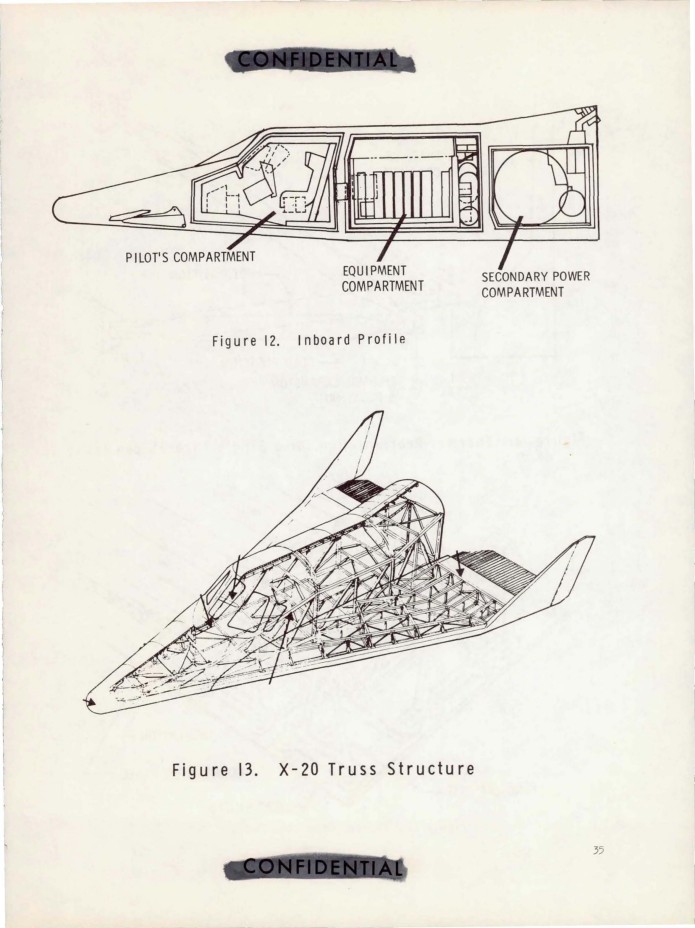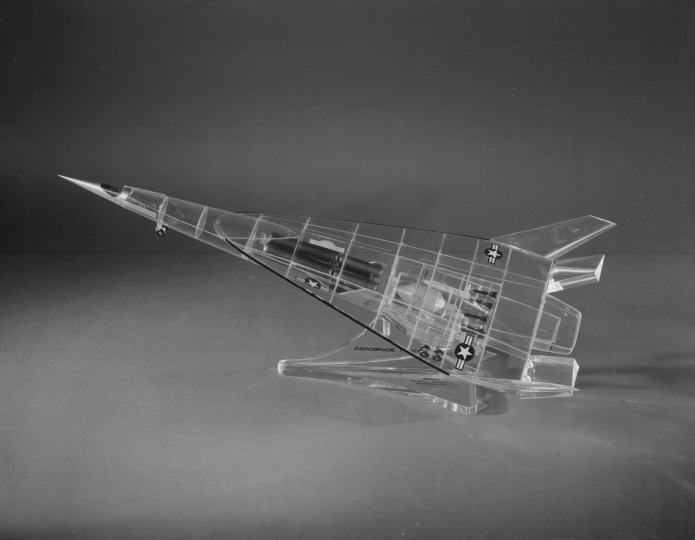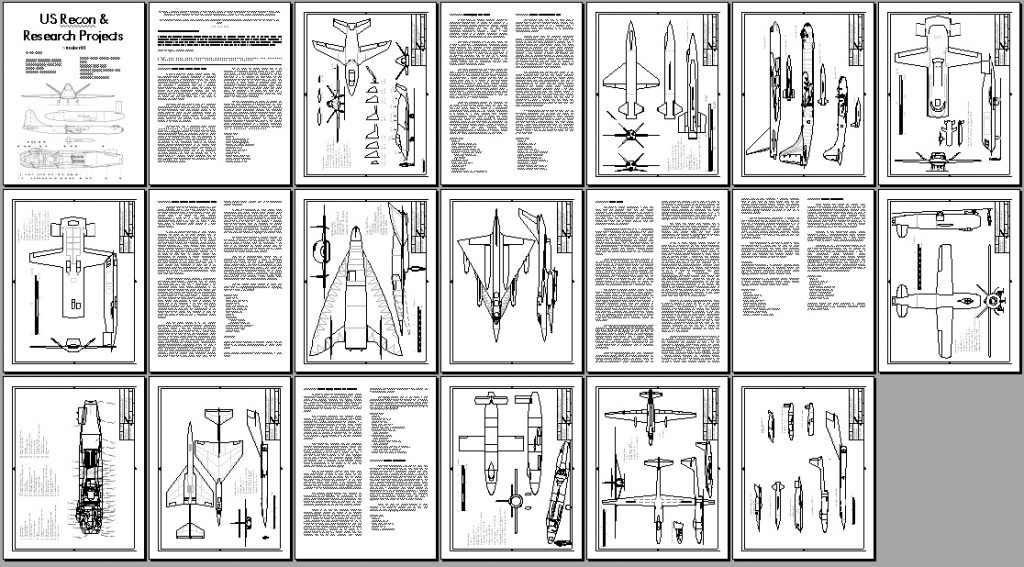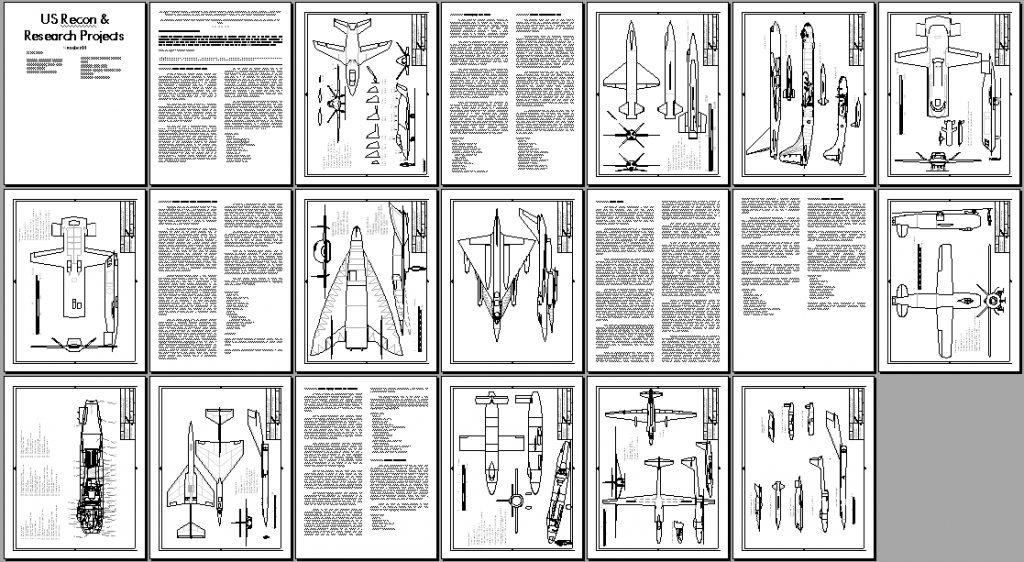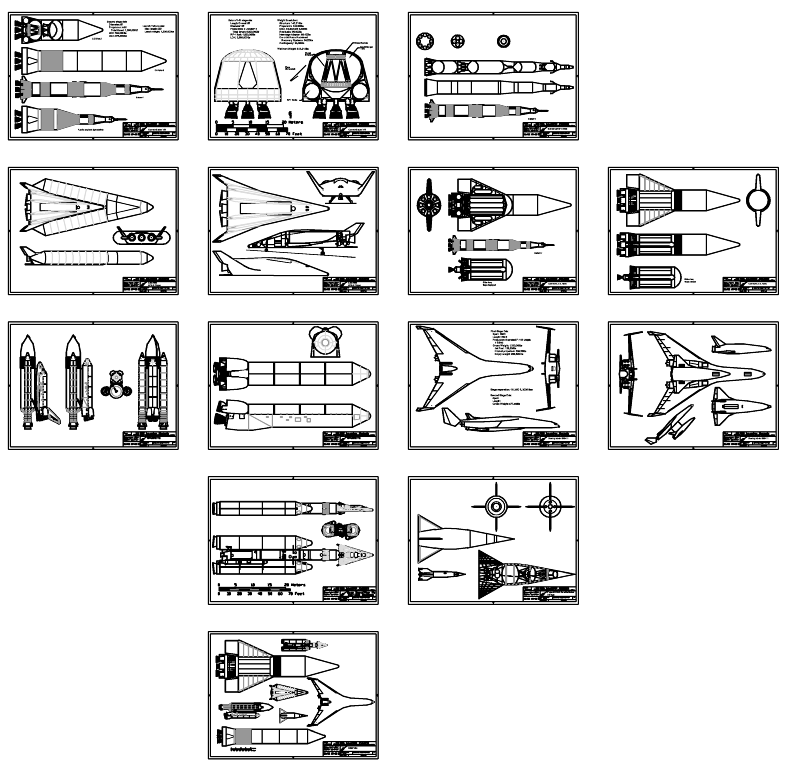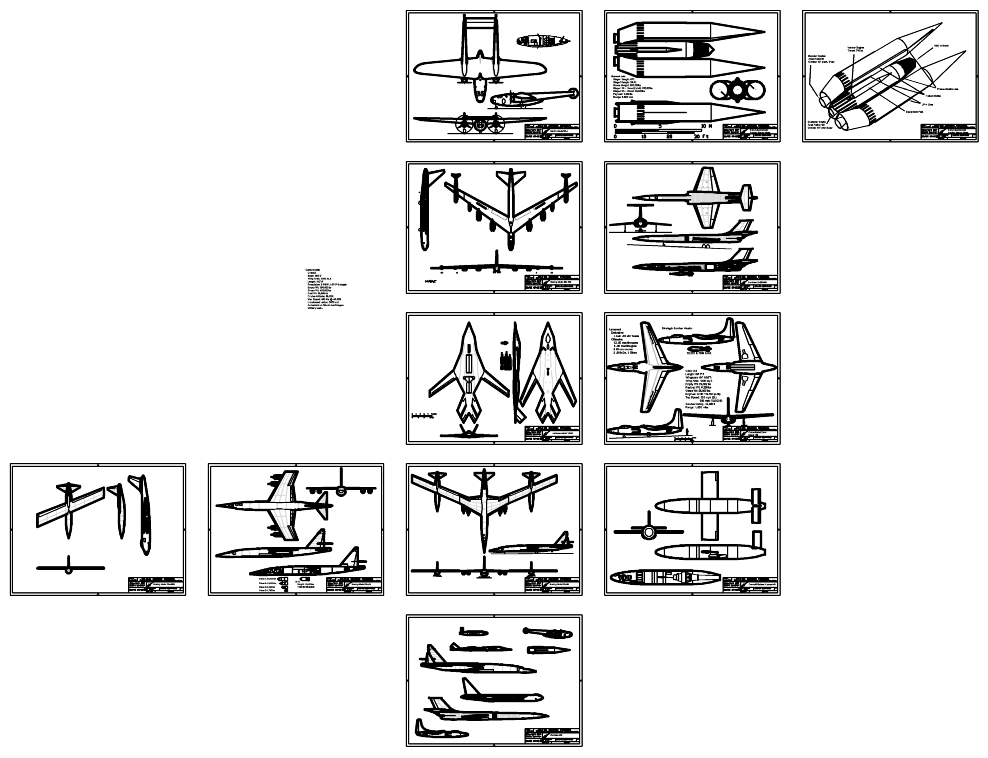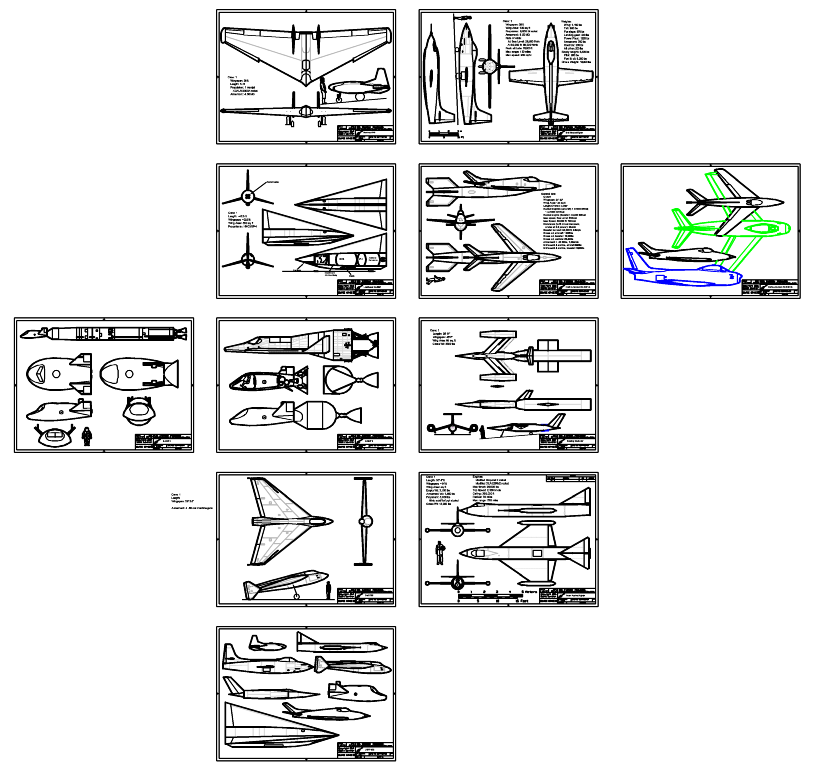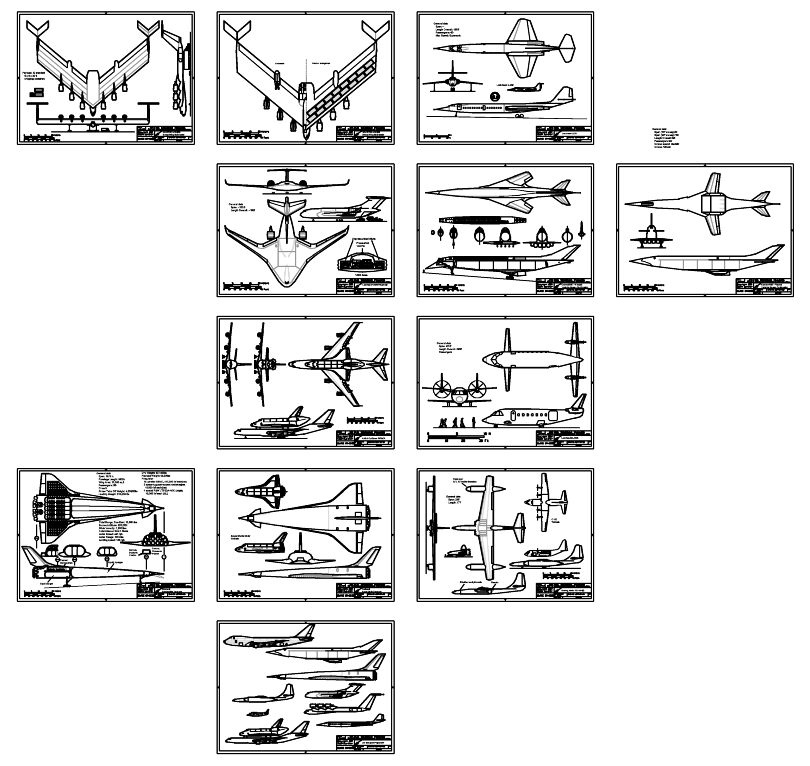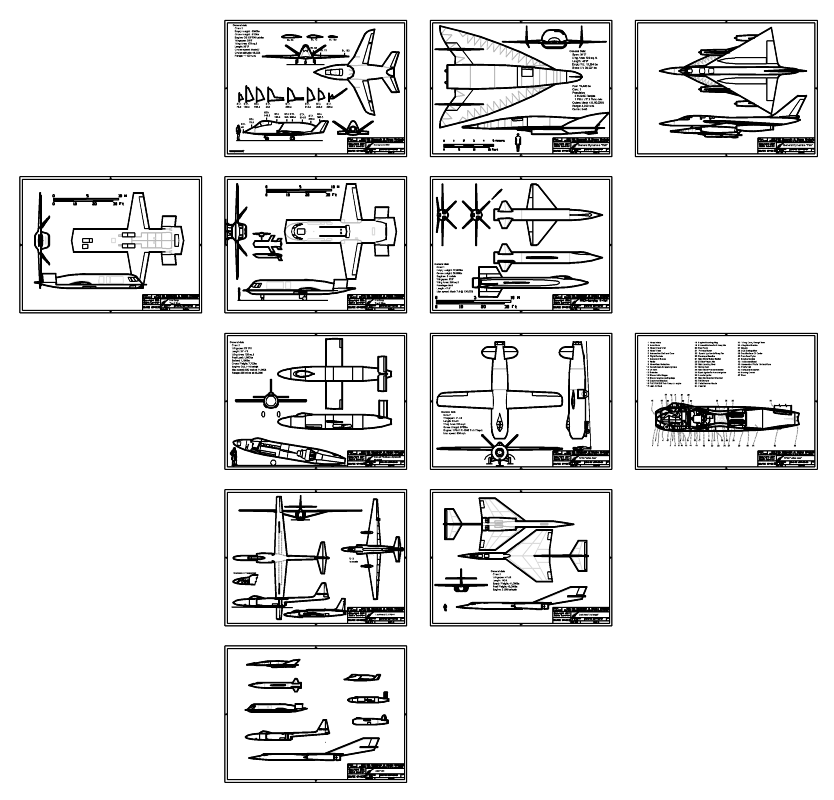A rare piece of color art of an early Dyna Soar being lofted atop an Atlas/Centaur. Color artwork of the Dyna Soar was created in some considerable abundance, but it was mostly reproduced in B&W, and its sadly rare for even those B&W reports to have been printed well, rarer still for them to have been scanned or copied well.
As a followup to the photos of the H-33 display model, here’s a Grumman report from July, 1971, giving a pretty good and well illustrated description of the H-33 orbiter.
The abstract on NTRS can be seen HERE.
The PDF file can be directly downloaded here:
Alternate space shuttle concepts study. Part 2: Technical summary. Volume 2: Orbiter definition
Support the APR Patreon to help bring more of this sort of thing to light!
The H-33 orbiter was designed in early 1971 to be launched atop a reusable manned flyback booster, a truly giant supersonic vehicle. The orbiter itself was similar in configuration to the Shuttle Orbiter as actually built, but it differed in that it had internal liquid oxygen tanks and expendable external hydrogen tanks, rather than a single large ET. The NASM has some good photos of a display model of the full system.
The H-33 was a popular design, at least at Grumman. A number of display models were made of it, including this detailed “cutaway” model made – seemingly – of plexiglas.
I have uploaded the full-rez images to the 2017-08 APR Extras Dropbox folder, available to all $4 and up APR Patrons. If interested, wander on by the APR Patreon and sign up. Lots of aerospace goodies available.
Every month, patrons of the Aerospace Projects Review Patreon campaign are rewarded with a bundle of documents and diagrams, items of interest and importance to aerospace history. If you sign up, you get the monthly rewards going forwards; the “back issues” catalog lets patrons aid the APR cause by picking up items from before they signed on. The catalog, available to all patrons at the APR Patreon, has been updated to include everything from the beginning of the project back in 2014 on up to February, 2017.
Below are the items from 2016 (and the first two months of 2017):
If you are interested in any of these and in helping to fund the mission of Aerospace Projects Review, drop by the APR Patreon page and sign up. For only a few bucks a month you can help fund the procurement, scanning and dissemination of interesting aerospace documentation that might otherwise vanish from the public.
Seems I’ve been a wee bit lax on the PDF Reviews I will attempt to rectify that in the future.
Here is a Air Force conference paper from May, 1964, describing the X-20 Dyna Soar program and vehicle. At this point the program had been cancelled for some months; the configuration shown in the paper was essentially the final design. It’s a decent overall view of the Dyna Soar.
Here’s the link to the abstract:
The X-20 (Dyna-Soar) Progress Report
Here’s a link directly to the PDF.
Support the APR Patreon to help bring more of this sort of thing to light!
Around 1960, the USAF had high hopes for the development of ASP: “AeroSpace Plane.” ASP was a program to develop an airbreather one- or two-stage-to-orbit spaceplane. The first stage would use some form of Liquid Air Cycle Engine; the inlet would be actively cooled by the liquid hydrogen fuel so that the incoming air would be condensed to liquid, which would allow the liquified air to be stored and fed into high chamber pressure rocket engines. ASP was extremely ambitious, and obviously – since no airbreathing system has made it to orbit (not counting simple turbojet-powered aircraft carrying otherwise conventional rockets such as Pegasus) – it did not work. A fair chunk of change was spent on the concept, but it faded away after a few years. The basic idea of ASP would arise a quarter century later with NASP, to similar levels of success.
A good, well-illustrated article on ASP was published some time back in issue v2N5 of Aerospace Projects Review.
Most of the known ASP designs were produced by Convair. It seems that Convair jumped into the program with both feet, producing not only detailed diagrams of a whole range of vehicles but also artwork and display models. And the latter category included some beautiful see-through models made from Plexiglas. It shows some interior details such as the complex plumbing of the Liquid Air Cycle Engines, as well as the winged second stage tucked into the lower fuselage of the very large hypersonic first stage. In an era long before computer animation, models such a this would be very useful in illustrating complex concepts to customers and bosses.
I have uploaded the full-rez version of this photo to the 2017-07 APR Extras Dropbox folder, available to all APR Patrons at the $4 level and above. If you are interested in accessing these and other aerospace historical goodies, consider signing up for the APR Patreon.
Dating from about 1963-63, this is a depiction of a high-altitude research aircraft equipped with “composite air-augmented turbo-jets” for launch and rockets for “near-space operations.” The general configuration was used many times over the decade, typically for scramjet powered aircraft. This was painted by Pat Shealy, chief of the Presentations Division, Air For Office of Scientific Research at Wright-Patterson Air Force Base.
Now available: two new US Aerospace Projects issues:
US Transport Projects #07
US Transport Projects #07 is now available (see HERE for the entire series). Issue #07 includes:
- Lockheed L-279-9: an early SST
- Convair HST – Phase II Variable Sweep Configuration: A mid-1960’s hypersonic transport
- Lockheed CL-1373: a short-haul turboprop liner
- Boeing Model 702-134(4): a large nuclear-powered logistics hauler
- McDonnell-Douglas Swept Wing Spanloader: a heavy cargo carrier
- Lockheed Hybrid Wing Body: a current design for an efficient military transport
- NASA Cut-Down 747 SCA: a 1973 idea for a Shuttle Carrier Aircraft
- Rockwell Boost Glide Transport: An early 1970’s rocket transport
USTP #07 can be downloaded as a PDF file for only $4:
——–
Also available, the first in a new series:
US Recon and Research Projects #01
US Recon & Research Projects #01 is now available (see HERE for the entire series). Issue #01 includes:
- General Dynamics “FISH”: 1958 concept for Mach 4 parasite
- NACA-Langley X-Tail X-15: early hypersonic rocket plane concept
- “Jake’s Jeep”: WWII-era motorjet design
- Lockheed “Archangel”: The first step on the road to the SR-71
- Boeing Model 853-21 “Quiet Bird”: A 1961 stealth platform
- Northrop Tacit Blue: Operational version of the early stealth experiment
- Convair Pilotless Airplane I-40 Inhabited: WWII-era design of a manned test for a flying bomb
- Lockheed CL-278-1-1: a proto-U-2
USRP #01 can be downloaded as a PDF file for only $4:
——–
——
So very, very close on the next two US Aerospace Projects issues. I’m only lacking cover “art”and have to deal with a bit of “dead air” in the middle of US Transport Projects #7. Usually I can shuffle things around well enough to not have this sort of thing, but this time it just hasn’t worked out. I suppose it doesn’t really matter all that much, but it does look kinda lazy like that.
It’s been about a year since I released the last USxP issue. That last issue was the first time where I used vector diagrams embedded within the issue, rather than raster images; getting the diagrams from AutoCAD into Word was a bit of a chore back then. And in the intervening months… I forgot how I did it. So I had to figure it out again, and the process is different. I have to walk the AutoCAD diagram through Rhino 3D and save as a WMF and blah, blah, blah; end result is it works just fine. I’ve done some further refinement… the main outlines are set at 0.25 mm width and the ends of the lines have been reset to rounded and mitered, so sharp corners now look more like sharp corners.
Hoping to have these two out in a day or two. The other three will be rather longer.
I’m essentially done with the drafting portion of the exercise. Now to finish the writing. I had planned on releasing ll five at once, but due to external factors I’ll almost certainly have to split this up. So… which ones do people want more? The publications forthcoming are Fighters, Bombers, Transports, Launchers and Recon & Research. Comment below…
